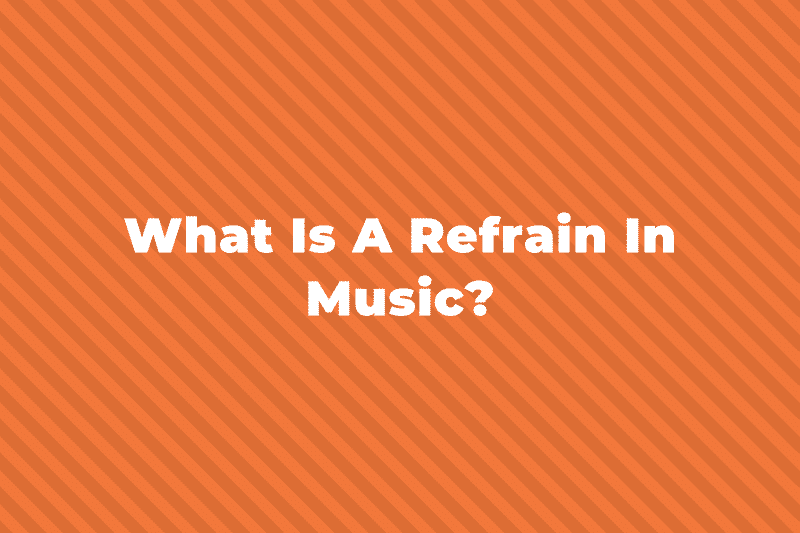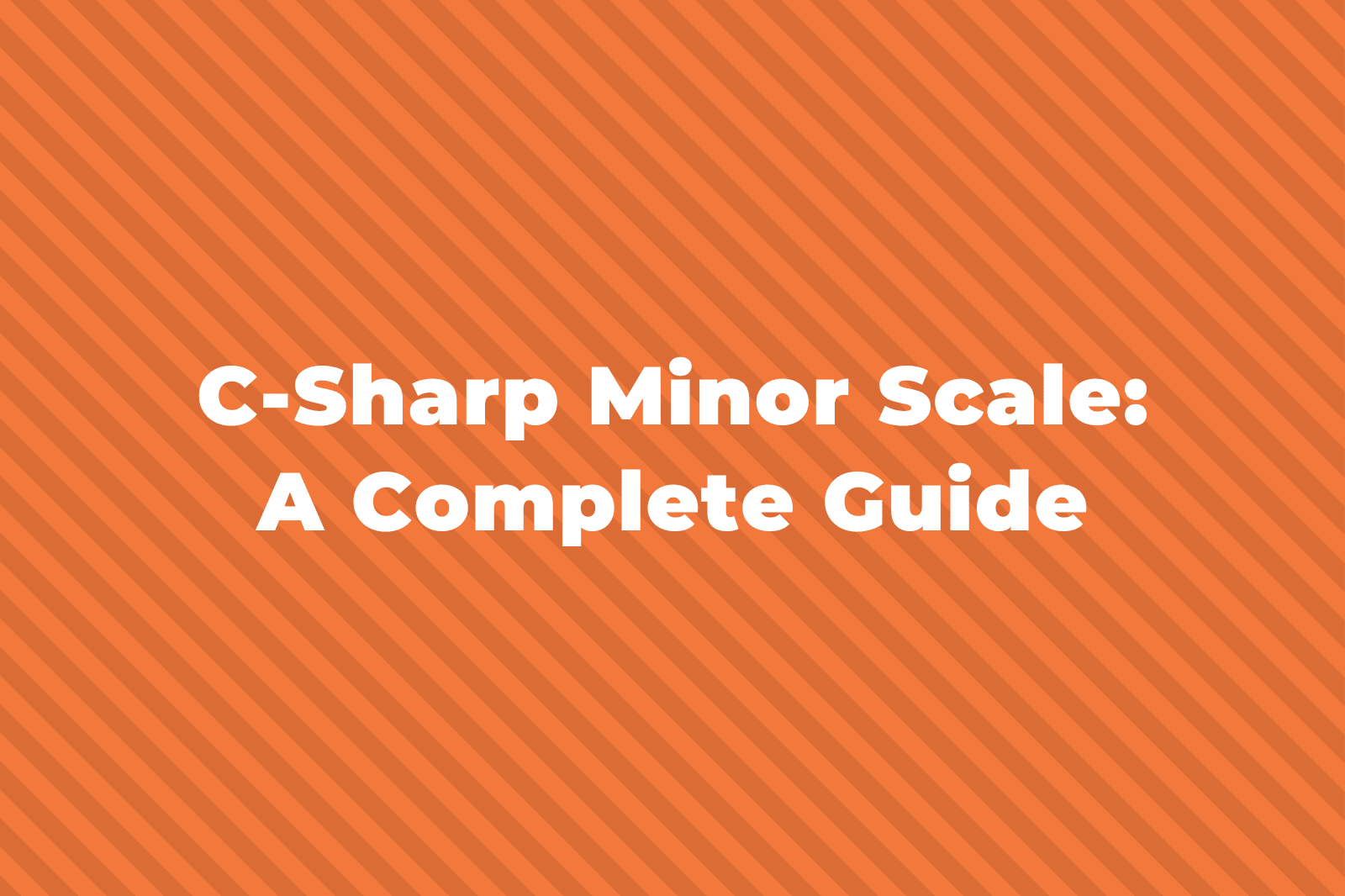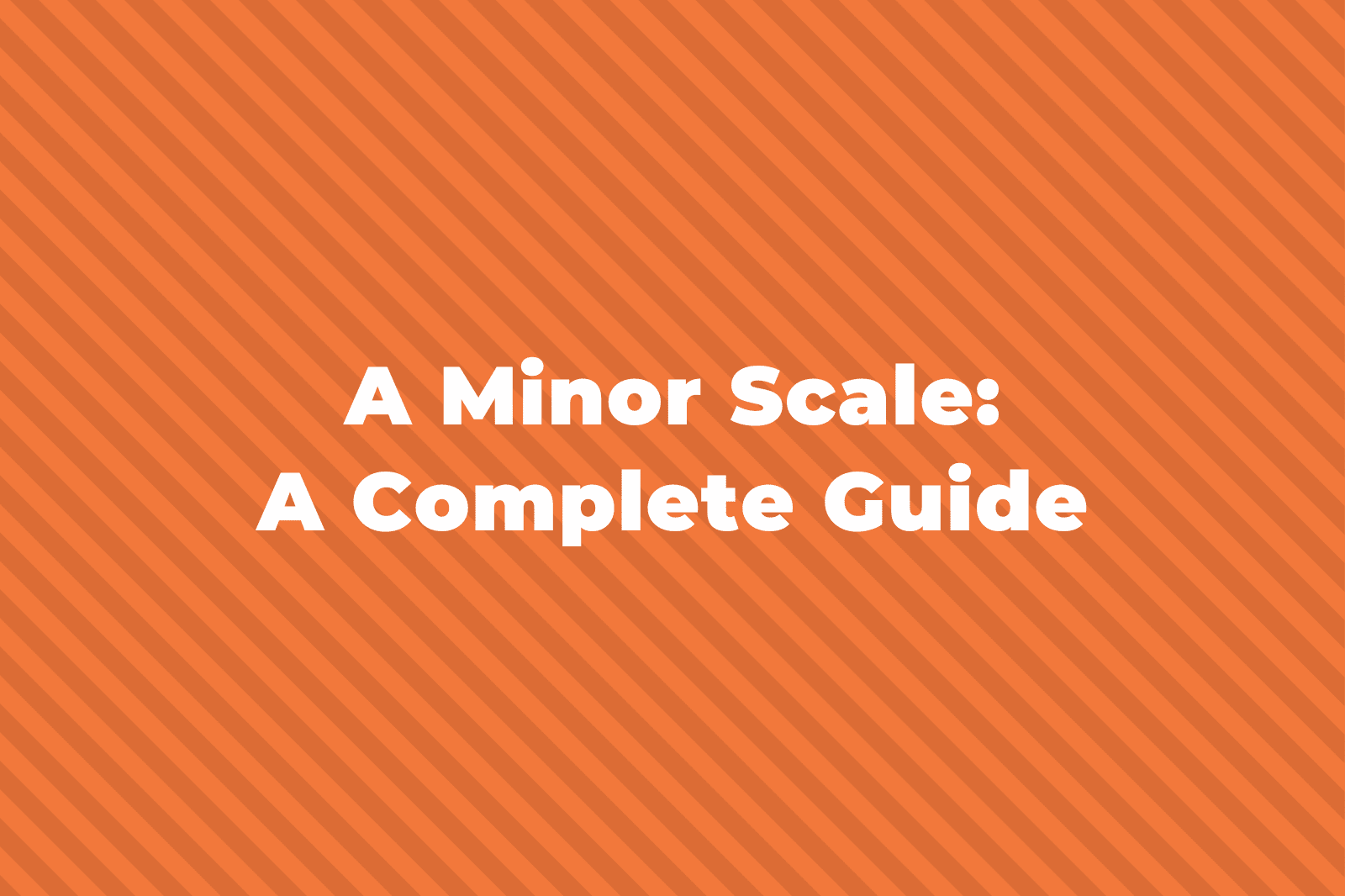Music theory as a whole is a very large topic, and it can be used to create some really interesting sounds and colors in a piece of music. It has a lot of rules, but the main rule above all is that any rule can be broken in service of the music. Once you’ve learned the basics of harmonic function and chord progressions, you should try to expand your technique by bending or breaking some of the rules you first need to learn.
This post takes a look at one of those rule-bending or breaking situations – the Tritone Substitution. What is a tritone substitution, how do you use it, and what is its function? First, however, let’s go over what a tritone is.
The Definition Of A Tritone
A tritone is an interval of 6 semitones (half steps) or three whole tones (whole steps).
In fact, the name “tri”tone comes from the fact that it is an interval made by combining 3 whole tones.
If you look at the chromatic scale, which is a scale consisting of only semitones, you can start at any note and combine it with the note 6 notes away to create a tritone:

For example, starting on C we can go up 6 notes (C, C#, D, D#, E, F) to get to F#, and the C-F# interval creates a tritone.
The same works for going down as well (for example, Bb ⇨ E is a tritone).
What is a Tritone Substitution?
A Tritone Substitution is when you substitute a dominant 7th chord (like G7 or D7) for another dominant 7th chord that is a tritone away from it.
For example, above we said that D – G# forms a tritone, and Bb – E as well.
So, if we had a D7 chord in a progression, a Tritone Substitution would switch in a G#7 chord in its place, and a Bb7 could be switched to an E7.
The same is true the other way – a G#7 could be swapped for a D7 chord, and an E7 could be switched to a Bb7.
Here is a D7 chord next to a G#7 chord.

The reason a tritone substitution works harmonically, and the reason one can easily be swapped for another, is that dominant 7th chords that are a tritone apart share the same tritone notes within the chords themselves.
Let’s look at this D7 and G#7.
D7 notes – D, F#, A, C
G#7 notes – G#, B#, D#, F#
As you can see right away, they share the note F#.
They also share the note C, because B# is enharmonically equivalent to C (this means they are the same note, just written differently).
The notes C – F# form a tritone themselves, so the two chords share a pair of notes that form a tritone.
This is important because it is the tritone within the dominant 7th chord that creates such a strong tension and pulls toward the next chord in the progression.
Using a tritone substitution introduces a unique and non-diatonic chord to the chord progression, but keeps the same tritone intact, so it still creates the same tension and pulls just as strongly to the next chord.
Tritone Substitutions in Chord Progressions
Chords in progressions are typically represented by a number, which is the scale degree that the chord is built upon in that specific key.
For example, let’s take a piece of music that’s in the key of C Major:

This is the C Maj scale.
All of the chords in a song that’s in the C Maj key will have chords built on a note in this scale – D min, A min, F Maj, G Maj, etc.
We can also number these scale degrees and then use those numbers in our chord progression:

Say we have a progression that goes Imaj7 (CMaj7) ⇨ IVmaj7 (Fmaj7) ⇨ iimin7 (Dmin7) ⇨ V7 (G7) ⇨ I (C Maj):

This is a very common chord progression, and the V7 ⇨ I is a common cadence (ending) to the progression.
However, with a tritone substitution, we can introduce a chord that is non-diatonic (not within the key of C Maj) and therefore will sound interesting and colorful when paired with the other chords, but it also has the pull and resolution that a V7 ⇨ I cadence has.
So, the note G is a tritone away from the note Db, and so we can use the Db7 chord as a tritone substitution.
As you can see above, there is no note Db in the C Maj scale, but the note D is the 2nd scale degree, and is written as ii (or II if Maj).
We can therefore write this tritone sub as a bII7 chord.
Using this substitution gives us this progression: Imaj7 (CMaj7) ⇨ IVmaj7 (Fmaj7) ⇨ iimin7 (Dmin7) ⇨ bII7 (Db7) ⇨ I (C Maj):

The G7 chord contained the tritone B – F, which resolved to C – E in the C Maj chord.
The bII7 (Db7) chord also contains that same tritone, but written as F – Cb, and it also resolves to the C – E in the C Maj.
Also notice that the iimin7 ⇨ bII7 ⇨ I progression includes a descending sequence of semitones, going from D ⇨ Db ⇨ C.
This also creates an additional pull to the tonic chord.
That is the most common place you would see a tritone substitution, in the middle of a ii ⇨ V7 ⇨ I chord progression, because the descending semitones adds a cool harmonic color.
Another common usage is in a 12-bar blues progression.
A typical 12-bar blues progression looks like this: I7 ⇨ I7 ⇨ I7 ⇨ I7 ⇨ IV7 ⇨ IV7 ⇨ I7 ⇨ I7 ⇨ V7 ⇨ IV7 ⇨ I7 ⇨ I7.
A tritone substitution would occur in bar 4, when the I7 chord is about to transition to the IV7 chord, changing that I7 chord to a bV7 chord.
This would again give the downward semitone motion between bar 4-5.
In C Maj, instead of bars 1-5 looking like this: C7 ⇨ C7 ⇨ C7 ⇨ C7 ⇨ F7, it would instead look like C7 ⇨ C7 ⇨ C7 ⇨ Gb7 ⇨ F7.

You can also use the tritone sub for other chords in a progression.
Given the progression I ⇨ VI7 ⇨ II7 ⇨ V7 ⇨ I, each of the chords VI7, II7 and V7 can be thought of as the “V” dominant chord of the next chord in the progression.
Thus, the VI7 chord is “V7 of II”, II7 is “V7 of V”, etc.
Therefore, the same rules can apply for each chord, and the VI7 can be tritone subbed for bIII7, or the II7 can be tritone subbed for the bVI7.
Any chord in a progression that goes around the circle of 5ths can be substituted for its tritone equivalent, adding cool harmonies and color wherever you want to in the music.
Examples of Tritone Substitutions
There are examples of Tritone Substitutions in classical music.
They are usually labelled as a type of augmented Neapolitan Sixth chord, in which a Maj chord built on the bII scale degree adds an augmented 6th note on top (enharmonic equivalent of a b7) which creates the tritone.
One of the most widely-known examples of this is the ending of Schubert’s “String Quintet in C Maj”.
Listen for the final held chord at the fff markings (timestamp: 48:42), which is a Db7 chord rather than a G7 chord:
However, while there are tritone substitutions found in classical music, they are much more commonly associated with Jazz music.
This is because Jazz is more fluid and relaxed in terms of function rules, and more about color and feeling than classical music.
For example, in the Jazz standard “In the Mood”, you see an Ab6 ⇨ Bdim7 ⇨ Bbm7 ⇨ Eb7 progression (listen at 0:48), with the B chord acting as a tritone sub for the “V of Bb”, F7.
Another spot is at 0:58, with the progression Eb6 ⇨ E7 ⇨ Eb7, as E7 is the tritone sub for Bb7:
In the track “Dizzy Atmosphere” by Dizzy Gillespie, bars 17-25 contain the chord progression D7 ⇨ Db7 ⇨ C7 ⇨ B7 ⇨ Bb7 ⇨ A7 ⇨ Ab7.
Every other chord in that progression (Db7, B7, and A7) acts as a tritone substitution between the other chords, because the whole progression can be thought of as repeating ii ⇨ V7 ⇨ I cadences, and the V7 middle chords are substituted for their tritone counterparts:
Summing Up
In summary, tritone substitutions are an interesting and harmonically functional way to add a unique, colorful chord into a chord progression.
They can be added in anywhere there’s dominant 7th motion, like in a ii ⇨ V7 ⇨ I progression, and if you see a long progression of descending semitones (like in the “Dizzy Atmosphere” example), then that is most likely using tritone subs.



